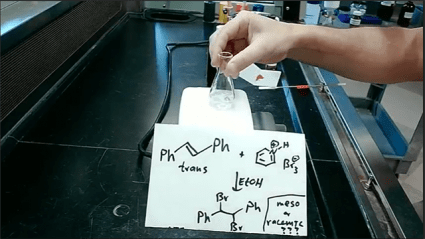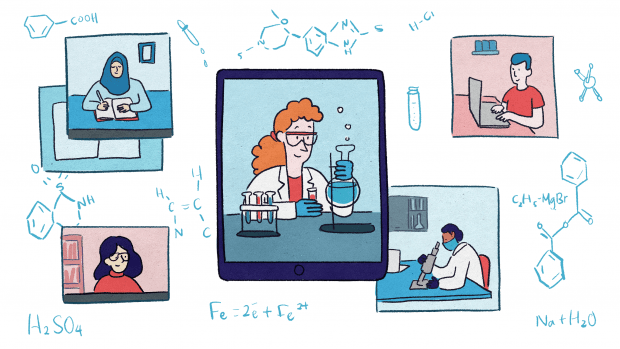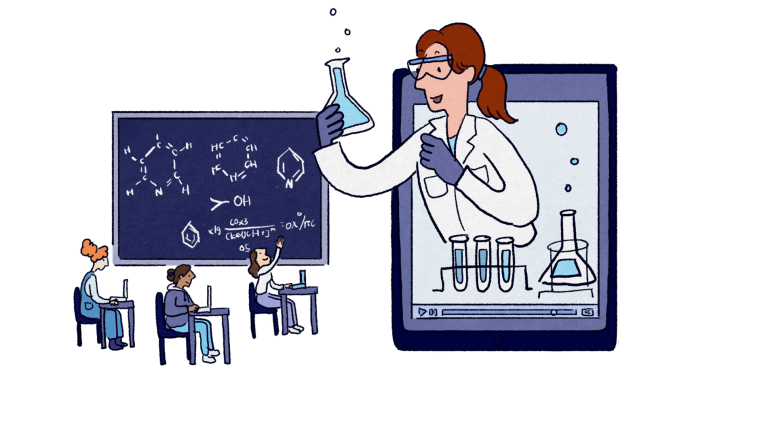Remote teaching with Kathryn McMenimen: Coming together while apart
When Mount Holyoke moved to remote education this spring, Kathryn McMenimen, associate professor of chemistry and co-chair of the biochemistry program, worked with Library and Information Technology Services (LITS) to find new ways of delivering her classes.
When Mount Holyoke moved to remote education this spring, Kathryn McMenimen, associate professor of chemistry and co-chair of the biochemistry program, worked with Library and Information Technology Services (LITS) to find new ways of delivering her classes. She spoke about how she has moved her organic chemistry course online and continues to engage students in the learning process even under difficult circumstances.
What are some of the tools you have been using to bring your classes to your students who have dispersed around the world?
I pre-recorded lectures and posted them both on YouTube and Moodle for the students to watch when they are able. I also break the lecture up into smaller segments of videos for the students to be able to watch and rewatch and access whenever it’s convenient.
I hold student office hours online via Zoom, which the whole class is invited to attend, but they are not mandatory.
Because they are on Zoom, I can now record these sessions with the students’ permission and then post them to our class Moodle site, so that the students who couldn’t come or couldn’t stay for the whole session have access to the entire discussion.

What about instructionally? What have been some of the challenges you’ve overcome creatively to continue to deliver your content?
There is a lab component to this course, and our fantastic lab instructors have been working so hard to create opportunities for students to witness them. They’re making videos of themselves actually doing the labs. Once students turn in their pre-lab assignments, they get access to those videos. In which the lab instructor gives the student data so that they can then answer discussion questions.

Have you found support for virtual teaching from other sources?
I think the fact that the faculty, staff and students have come together in this time has really highlighted how engaged students are with their coursework, with their friends, with the faculty, with staff — and with each other.
I’m seeing that, especially with student mentors. Before they knew that they would get paid to continue their jobs, they were volunteering to tutor other students. They just wanted to continue to be helpful and to continue to have those relationships with their fellow students.

Have there been any unexpected benefits from your transition to virtual learning?
We get to have more one-on-one and small-group sessions, simply because it’s hard to get everyone together at the same time.
Also, now that I record all my lectures and lecture notes on my iPad and post them, being able to rewatch all of that has been really helpful to students
I think when we get back to physical teaching, I would try to do even more of these shorter recorded tutorials that I’ve been doing.
If I can build up a little library of these shorter tutorials I’ll be able to just point a student there, or use it as an example, or even just an extra resource. I’m probably going to do a lot more of that kind of work in the future.
Any final thoughts?
I’m really thankful right now to be a part of such a great community. The students, faculty and staff have really pulled together. It’s so great that everybody has really tried to help one another during this time.